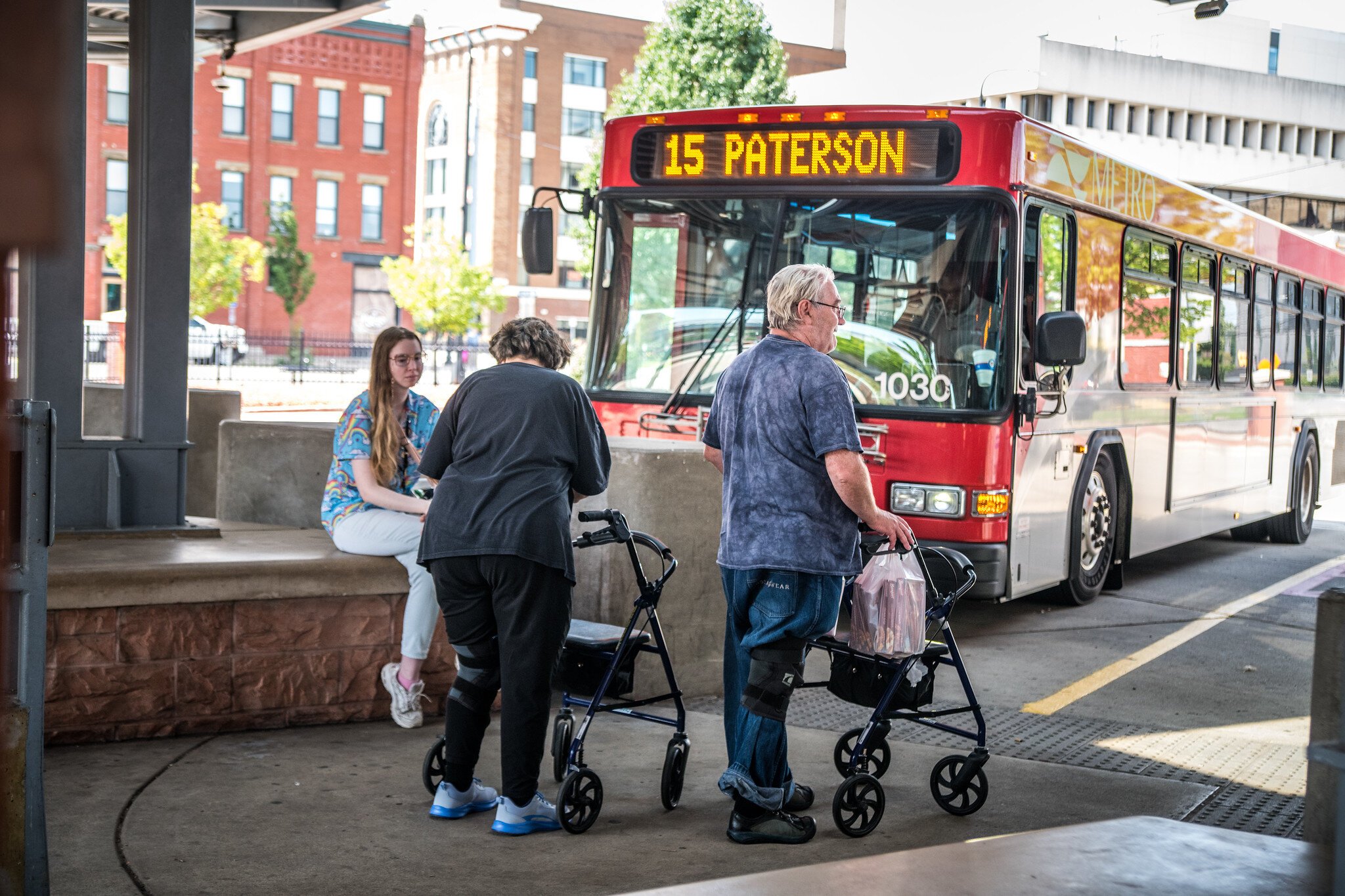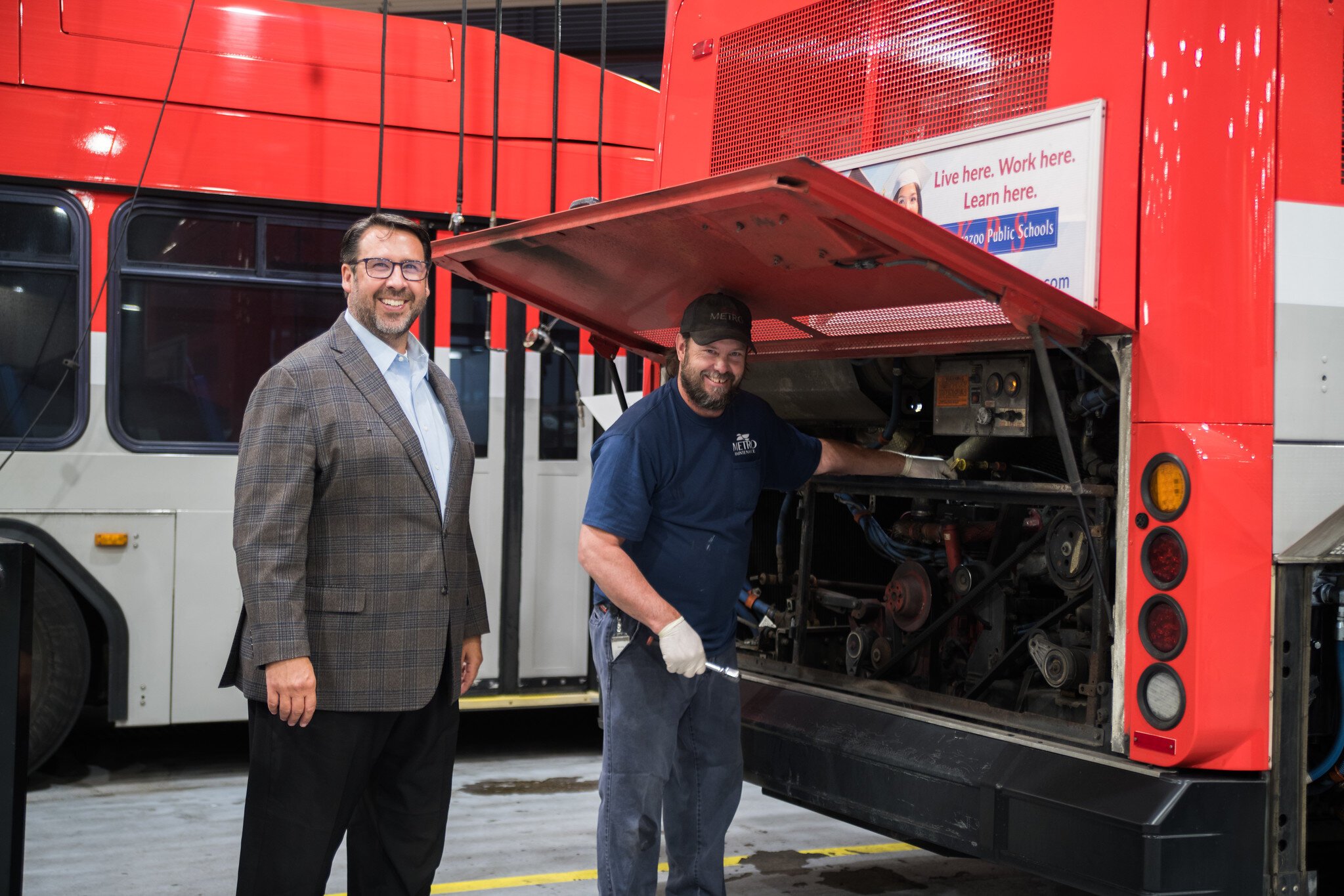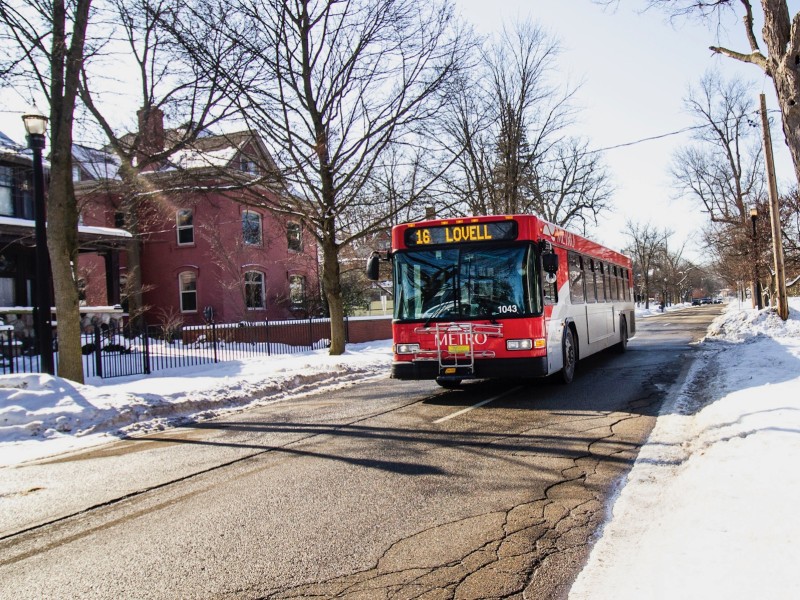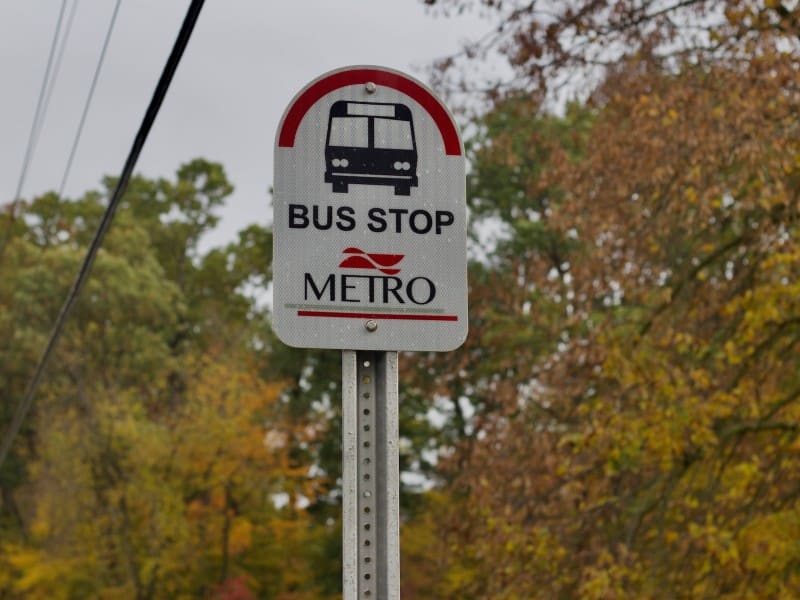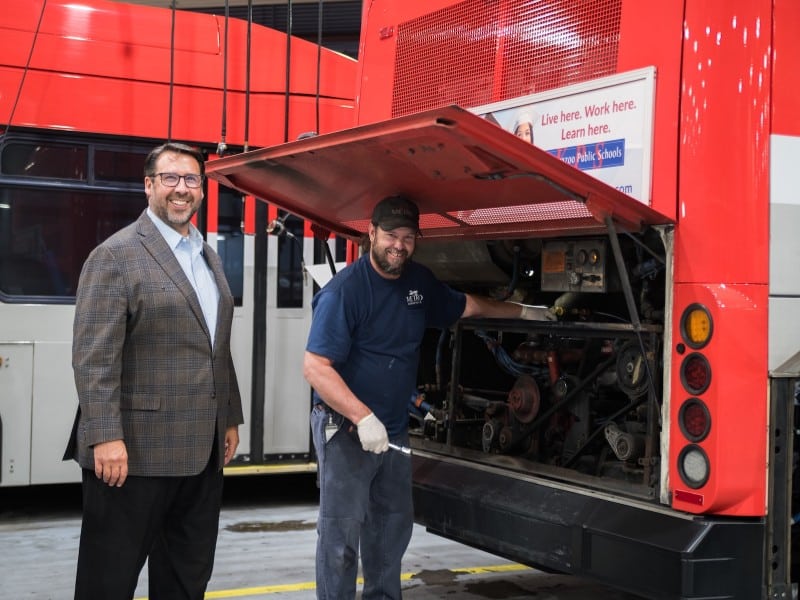KALAMAZOO, MI — About three years ago, David Green blew the engine in his Dodge SUV and was struggling to find new wheels.
“
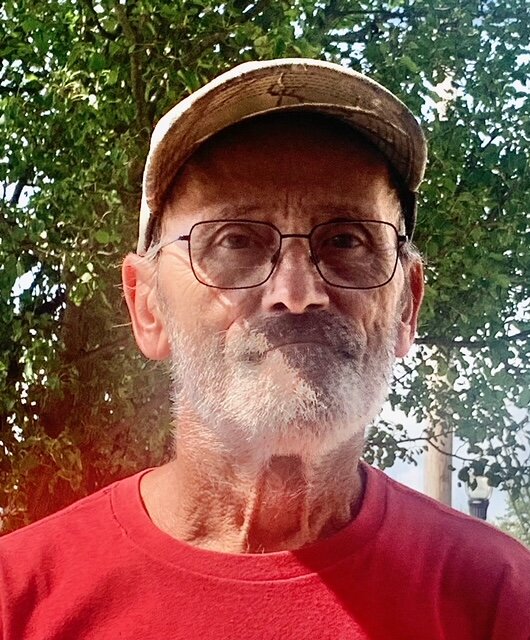
I had no way to get around and I didn’t know what I was going to do,” the South Burdick Street resident says. In the meantime, he started taking the bus to get where he needed to go.
Somewhere along the line — he figures about 18 months ago — he stopped looking for a new car and just kept riding the bus.
“I like riding the bus,” the 67-year-old man says he discovered.
Sean McBride, executive director of Kalamazoo’s Metro Transit, says he hopes more people see it that way and realize the role the public transportation system plays in the lives of lots of people.
“Public transit makes a difference in people’s lives,” he says. “It gets people to opportunities of success. There are people in our community who don’t have a lot, who lack opportunities, or have barriers. Mobility and transportation is one of the obstacles, and we help break that barrier for people so they can be successful.”
McBride says that while most communities are “driving” communities (where distances, geography, or circumstances make a personal vehicle a necessity), other options are needed.
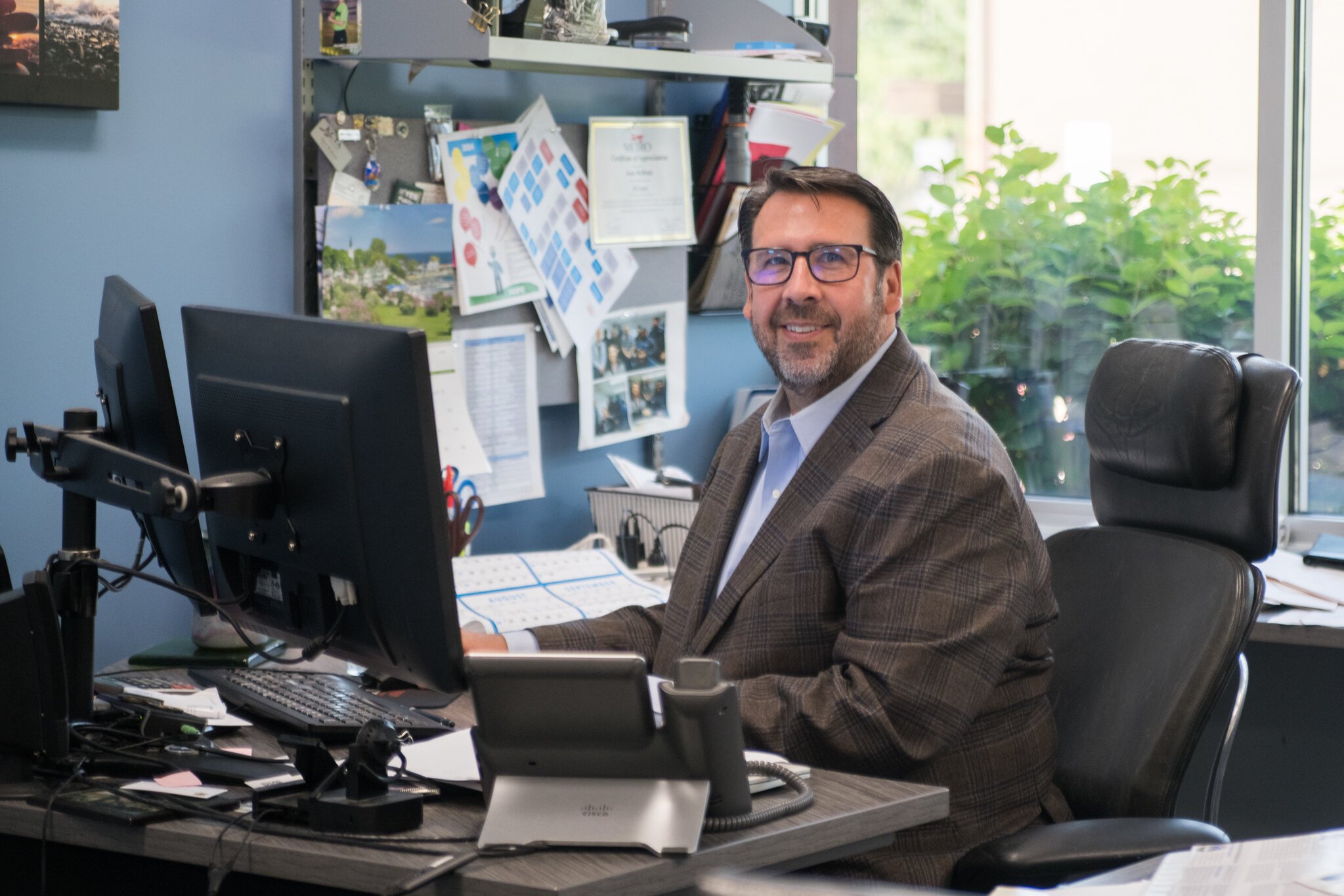
Sean McBride, executive director of Kalamazoo Metro Transit
“There are 15 to 20 percent of individuals who don’t have access to a car,” he says. “Those people are good, honest, hard-working people who can contribute to society by working and by going to school and by supporting their family and by supporting each other.”
As the city’s central public transportation system, Metro Transit is a seven-day-a-week operation that employs about 130 people who use 45 buses on 21 fixed routes. In 2024, Metro provided more than 1.9 million rides to people in the cities of Kalamazoo, Portage, and Parchment, as well as Kalamazoo, Oshtemo, and Texas townships. That is up from 1.7 million in 2023.
The staff includes about 70 drivers, 25 maintenance/technical employees, and 20 administrative and management workers. According to information provided by Metro Transit, the transit system has provided more than 125 million rides since the City of Kalamazoo acquired it from private owners and began operating it in January 1967.
Transit costs have escalated
McBride, who was hired in 2012 to serve as executive director of the Kalamazoo County Transportation Authority, says that since then, he has seen the department’s operating budget grow from about $15 million to about $25.7 million. And while ridership has seen annual increases of about 3.2 percent, the financial stability of the operation is an ongoing concern, with the possibility of a reduction in funding from the State of Michigan and the Federal Transportation Administration.
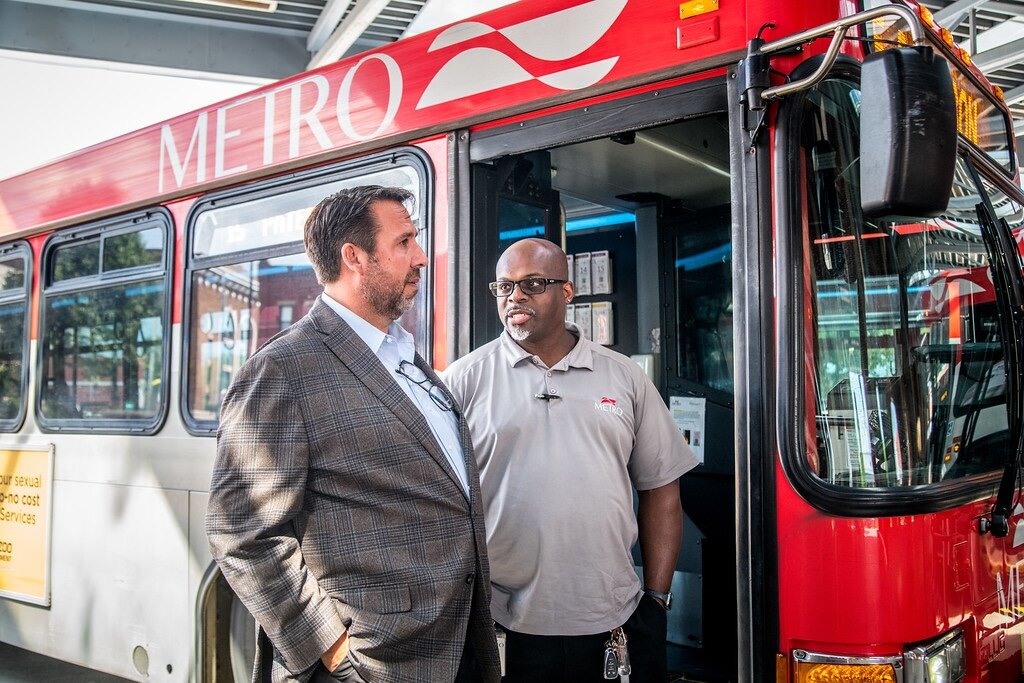
Sean McBride, executive director of Metro Transit, left, speaks with Coach Operator Michael Jackson.
He is also concerned with developing a stable workforce. About half of Metro Transit’s bus drivers left their posts when the COVID-19 pandemic surfaced in 2020. New local drivers had to be recruited and trained. A driver shortage continues.
“Our recruiting base in Kalamazoo is a local base,” McBride says. “We’re not recruiting people from Chicago or even Grand Rapids to come work in Kalamazoo. We need to develop and retain our talent here in Kalamazoo.”
He says that’s a challenge. But Metro Transit has worked hard at it and has had some success in finding good drivers.
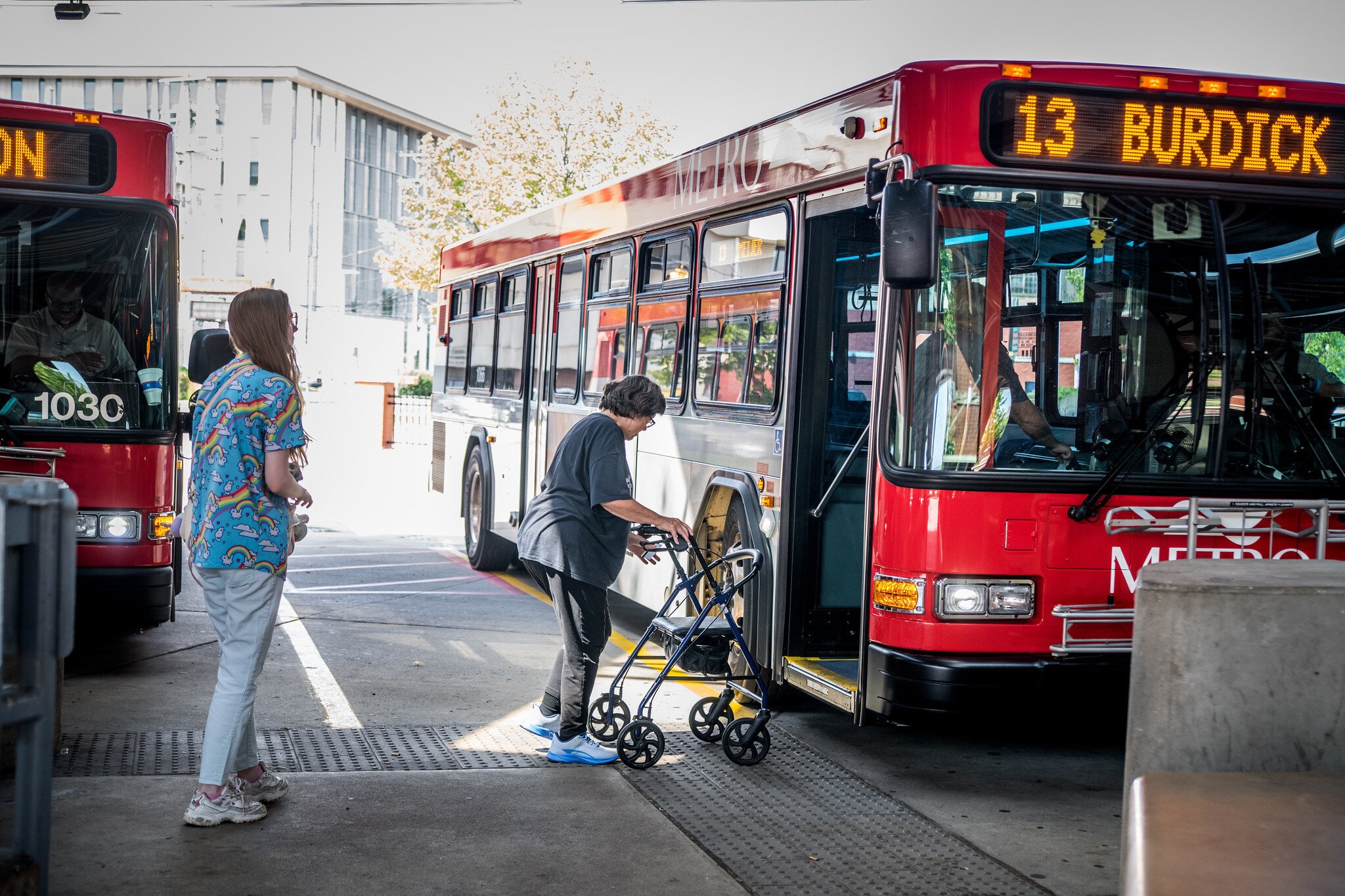
Kalamazoo Metro Transit aims to be accessible to all.
“They do a good job,” says Green, who now uses Metro Transit about four days a week, mostly significantly to go buy groceries and visit family members.
“I use the bus to go shopping,” he says. “Today I went to pick up my grandson. He lives up on the East Side.”
Together, they rode a bus back downtown and then out to The Crossroads mall. What should people know about the local transit system? Green says, “They’re reasonable. They get you where you got to go. And they ‘aint really that expensive.”
Upcoming millage to support services
The Kalamazoo County Transportation Authority was formed in 2006 to oversee the countywide implementation of two of the transit system’s services (Metro Connect and Metro Share). The Central County Transportation Authority was established in 2014 to expand and manage public transit services from the urban core of Kalamazoo to other parts of the county. In 2016, the City of Kalamazoo transferred its ownership and oversight of the system to the CCTA, which levies a 0.9 annual millage in the urban areas of Kalamazoo County to fund the fixed-route bus system.
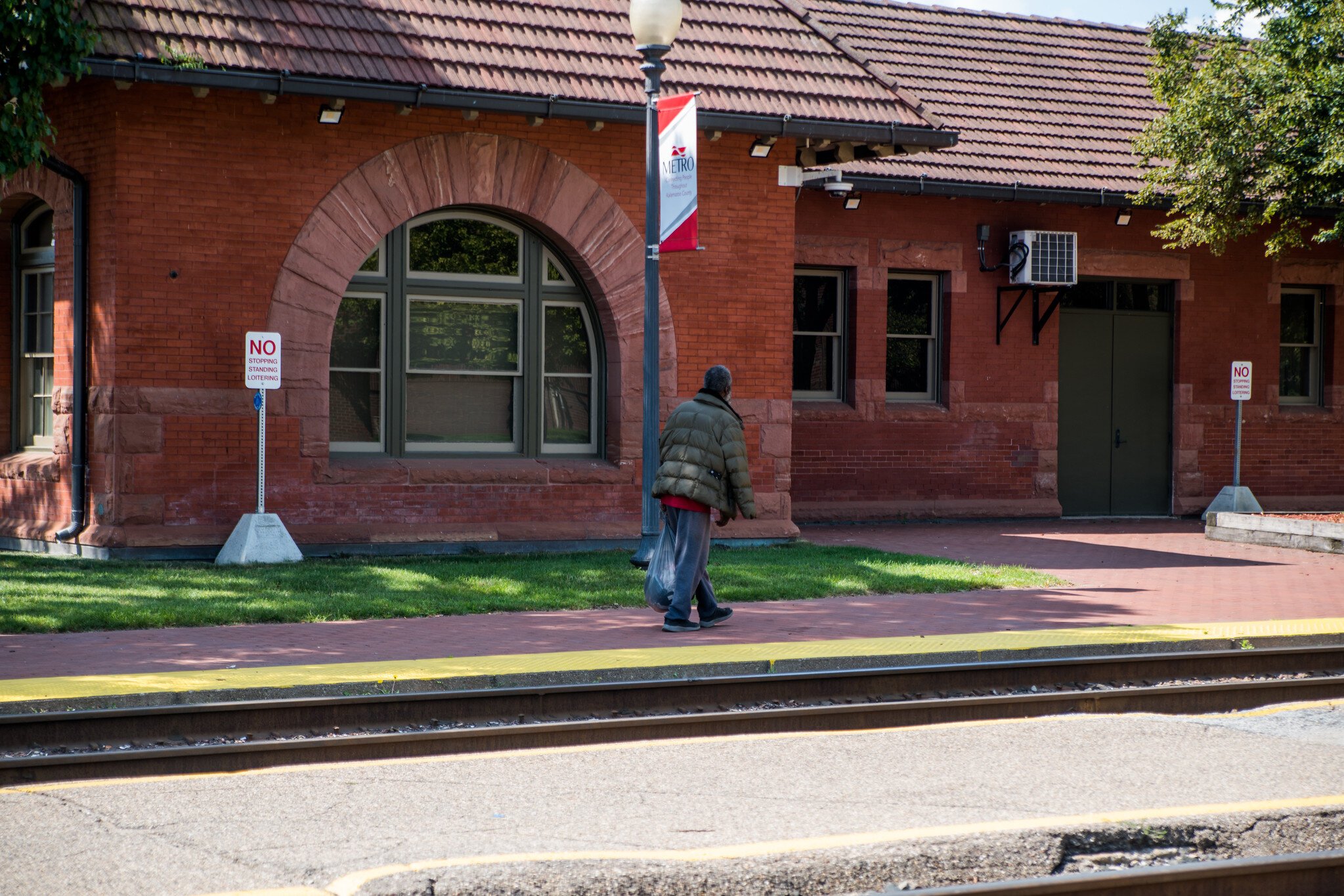
Outside of the Kalamazoo Transit Center on 459 N. Burdick.
In the upcoming Nov. 4, 2025, millage election, Metro Transit is expected to request an increase to 1.1 mills for five years. McBride says the additional funding is necessary to continue the current levels of bus service and continue to fund the Metro Link, a popular ride-on-demand service that started as a pilot program about 15 months ago. The 1.1 mills, which will also help fund Metro bus services, Metro Connect, and Metro Share, would take effect July 1, 2026 (for the Cities of Kalamazoo, Portage, and Parchment) and Dec. 1, 2026 (for Kalamazoo and Comstock Townships). A nonprofit, Citizens for Community Transportation, has been formed to “support local funding for local transit in Kalamazoo County.”
“It’s a good way for everyone to have access to their community,” Emily (Lower) Urban says of Metro Transit services.
Mobility solutions for all
The outreach manager for Metro Transit says, “If you need to travel, if you have a destination to get to, we provide options to help people get to those places, whether they have a car, or they don’t have a car, or if they don’t drive. Just trying to provide mobility solutions for all.”
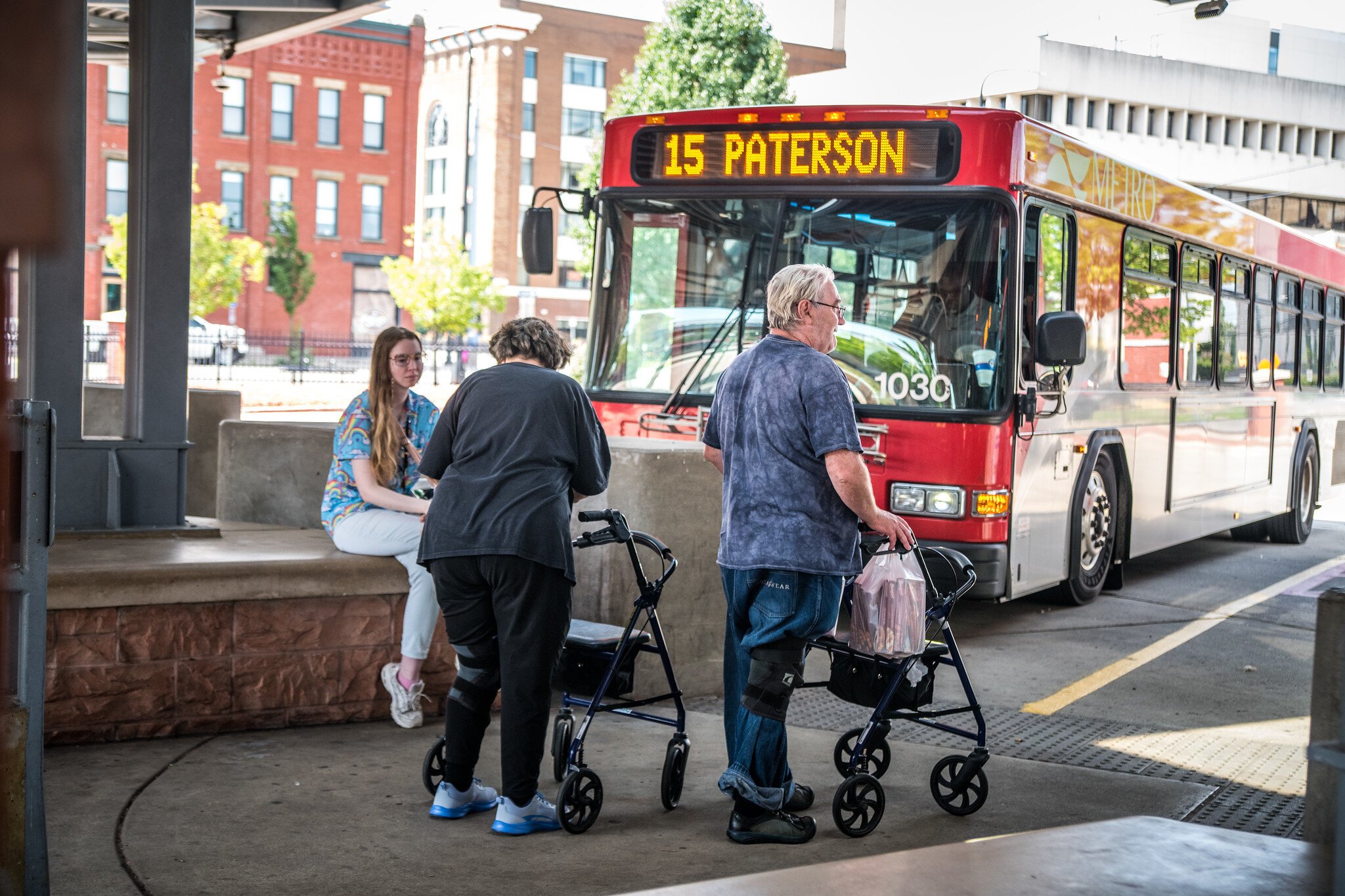
Kalamazoo Metro Transit aims to be accessible to all.
Urban says her mission is to make sure Metro Transit has a meaningful connection with the community, and to educate people on how to use any of the system’s four main services:
Metro Bus is the fixed-route heart of the area’s public transit system. It has 45 full-size buses that transport passengers on any of 21 routes that radiate from the Kalamazoo Transportation Center in downtown Kalamazoo. The longest of those is its South Westnedge Avenue route, which annually provides more than 226,000 rides to people headed as far south as The Crossroads mall. The standard one-way fare is $1.50, with discounts for seniors.
Metro Link is an on-demand, app-based transit service that anyone can use to have a six-seat passenger van come to a designated stop near their home and transport them to core locations or to a bus line that takes them close to their desired destination.

Inside one on Kalamazoo Metro Transit’s 45 buses
“People have an app,” Urban explains. “They pull it up and say I want to go here, here, and here. Mero Link operates in three distinct zones. There’s an east zone, a west zone, and a south zone.”
She says the concept is very much like the Uber and Lyft taxi services. Users indicate where they want to go. A van in that area appears at a stop near them and transports them to a location in that zone. For destinations outside the starting zone, the service transports riders to a bus line that will take them close to their destination or to an adjacent Metro Link stop in one of the other zones (if the rider’s destination is in one of their other zones).
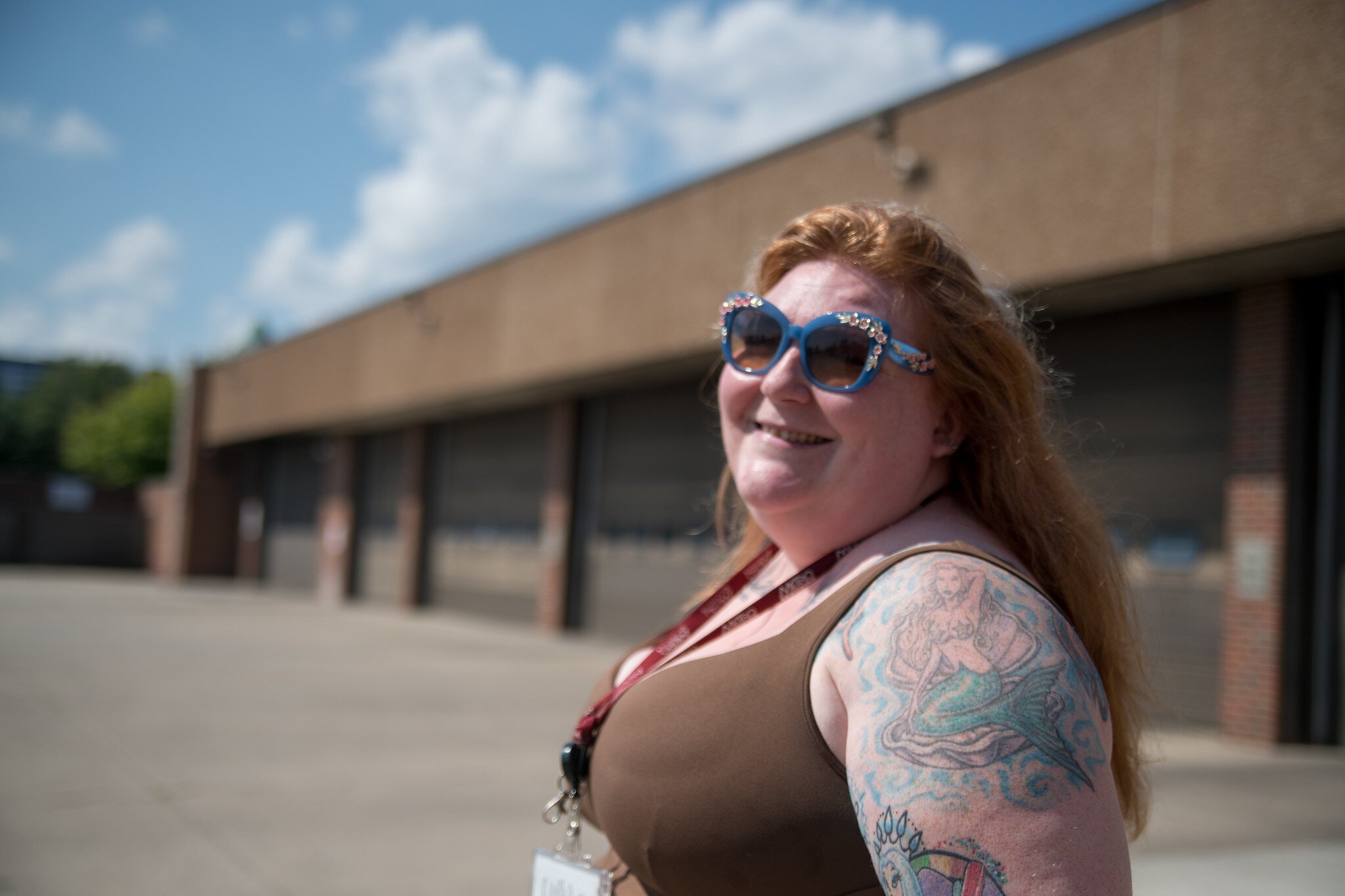
Emily Lower Urban, outreach specialist at Kalamazoo Metro Transit
At the start, the service tries to link a rider with a van within 20 minutes. Riders use the app to call for a ride home in the same fashion. The service, which started in April of 2024, costs $1.50 a ride, the same as standard bus fare.
People are using the service, Urban says. “We are seeing 7,000 rides a month now,” she says.
More information is available at www.kmetro.com.
Metro Connect is a countywide transit service that area residents can use to schedule a ride anywhere in the county, as well as to the Veterans Administration Hospital in Battle Creek. It is a door-to-door service that utilizes nine-passenger vans to pick up people at their homes and transport them.
“It’s anywhere in Kalamazoo County, for any reason for anybody,” Urban says.
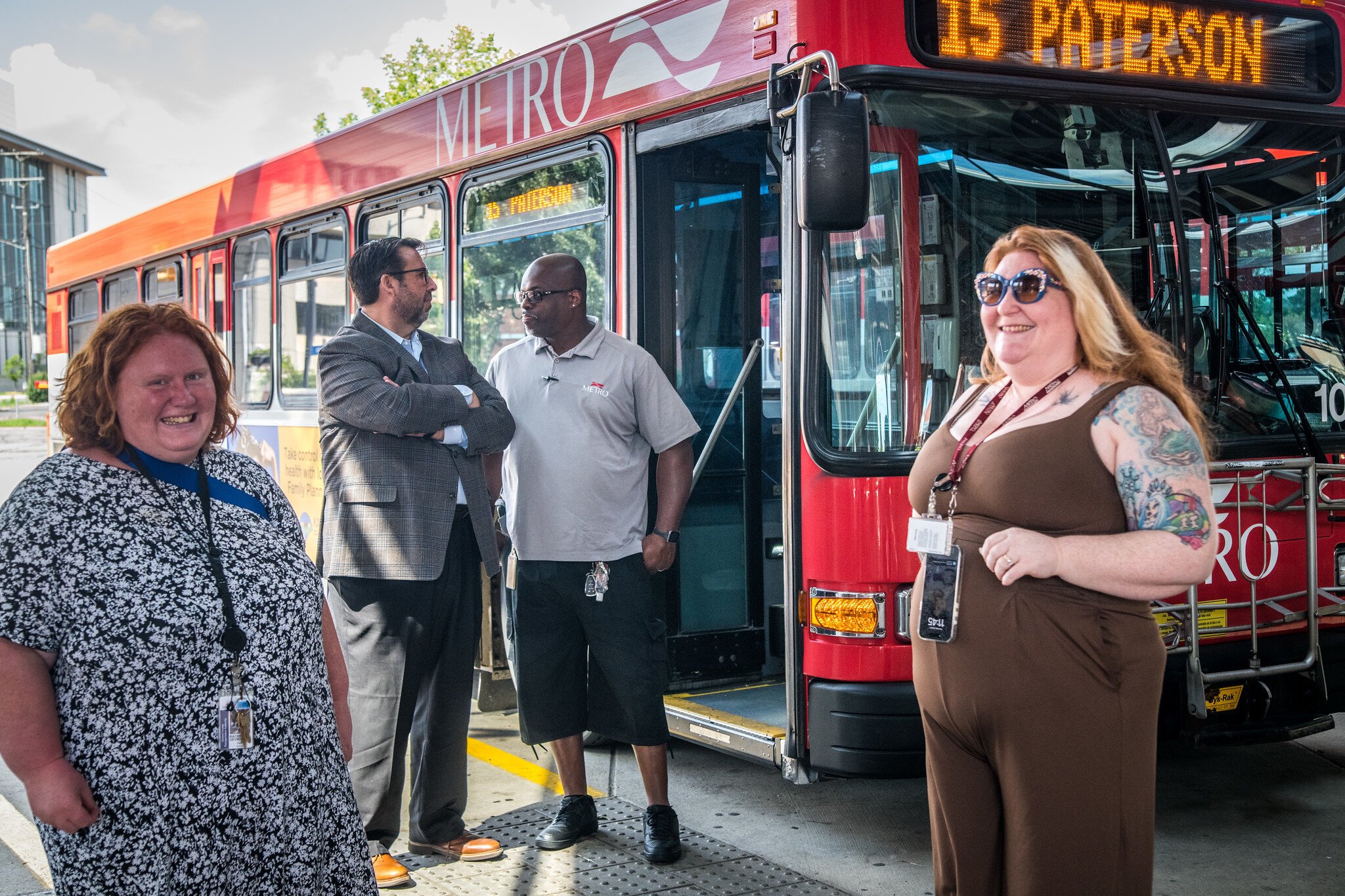
A few Kalamazoo Metro Transit employees gather at the Kalamazoo Transit Center (L-R): Rachel DeVries, Sean McBride, Michael Jackson, and Emily Lower Urban.
In 2024, it provided about 137,000 trips, up from 124,000 trips in 2023. The service, which got its start in 2007, is really well utilized, Urban says, “because it also goes later than the bus. It operates until midnight during the weekdays (versus 10 p.m. on Metro Bus). So it runs a little bit later and … if you’re working a later shift, you can take the bus to work, but then you can take Metro Connect home.”
She says some people use Metro Connect to take them to and from blood dialysis treatments. Seniors and people with a disability, such as the need for dialysis, may qualify for a reduced fare to use the service for as little as $4 each way. The standard fare, however, is $12 each way.
“

Inside Kalamazoo transportation hub at 459 N. Burdick
It would be $12 there and $12 back,” Urban says. “That’s $24. Still cheaper than Uber.”
She says users have to plan ahead for Metro Connect. Although they can try to schedule a ride for the same day, there is no guarantee they will be accommodated at such short notice. She suggests they call up to a week in advance.
Metro Share is a service that shares vans for specific uses with nonprofit organizations or government agencies that need to transport seniors and/or people with disabilities. The users must provide a driver who will be trained to operate the vans. Partnering to share costs with the Michigan Department of Transportation, the vans are maintained and fueled by Metro Transit, so their use is free for the organizations.
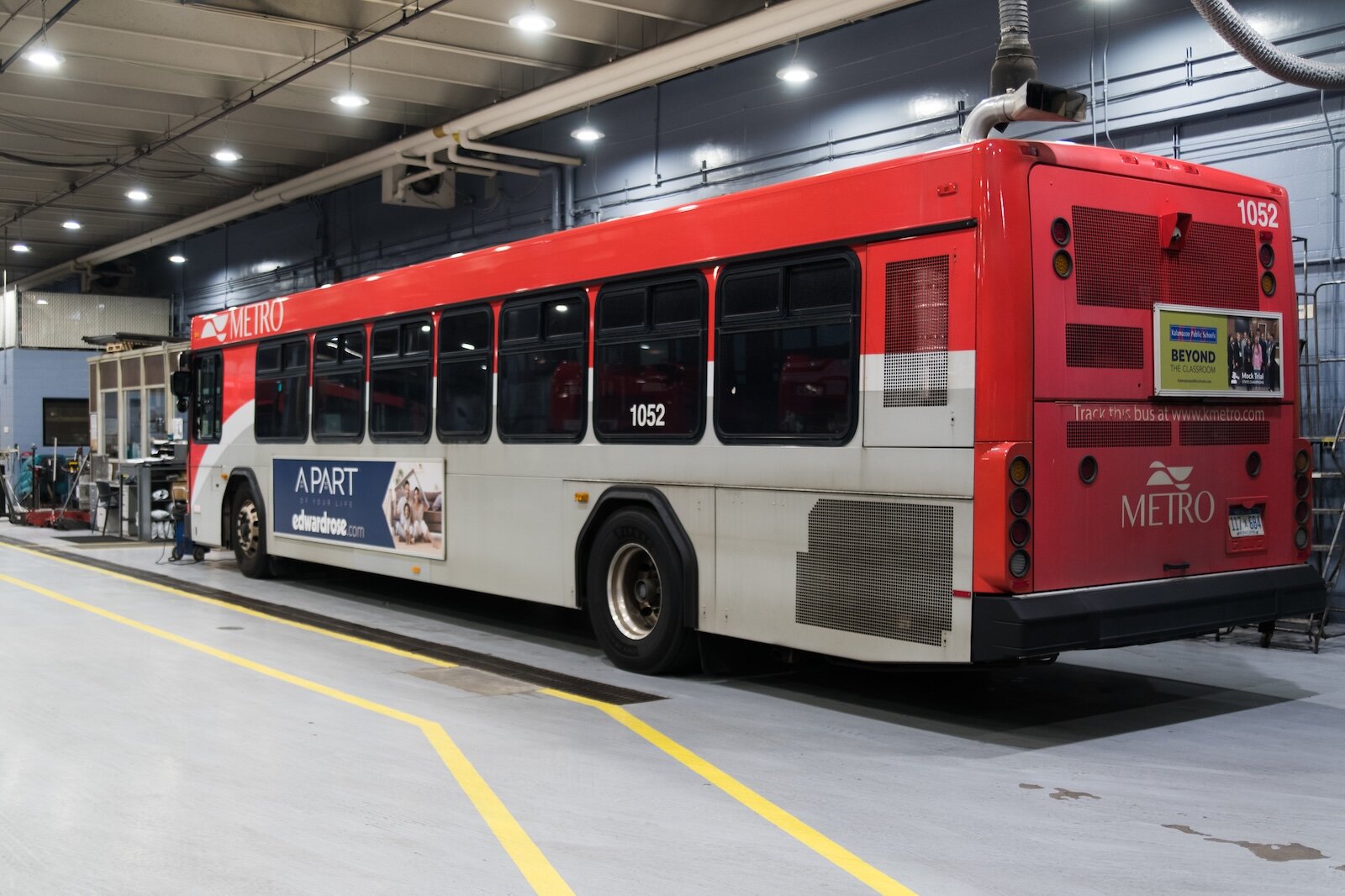
One of Kalamazoo Metro Transit’s 43 buses
“Churches use it to get people to church on Sundays,” Urban says. “There are other agencies that, if they have groups, like adult care facilities and that sort of thing, they can use that for transportation services.”
Qualified organizations can reserve any of nine nine-passenger vehicles to transport people within a 60-mile radius. The program is well utilized, and interest is growing.
Getting to where you need to go
Ambria Hunter says the local transit system meets her needs.
“It gets me to work every day on time,” the 21-year-old Eastside resident says. “I take it after work and in the morning. I go to work from 7 a.m. to 3 p.m.”
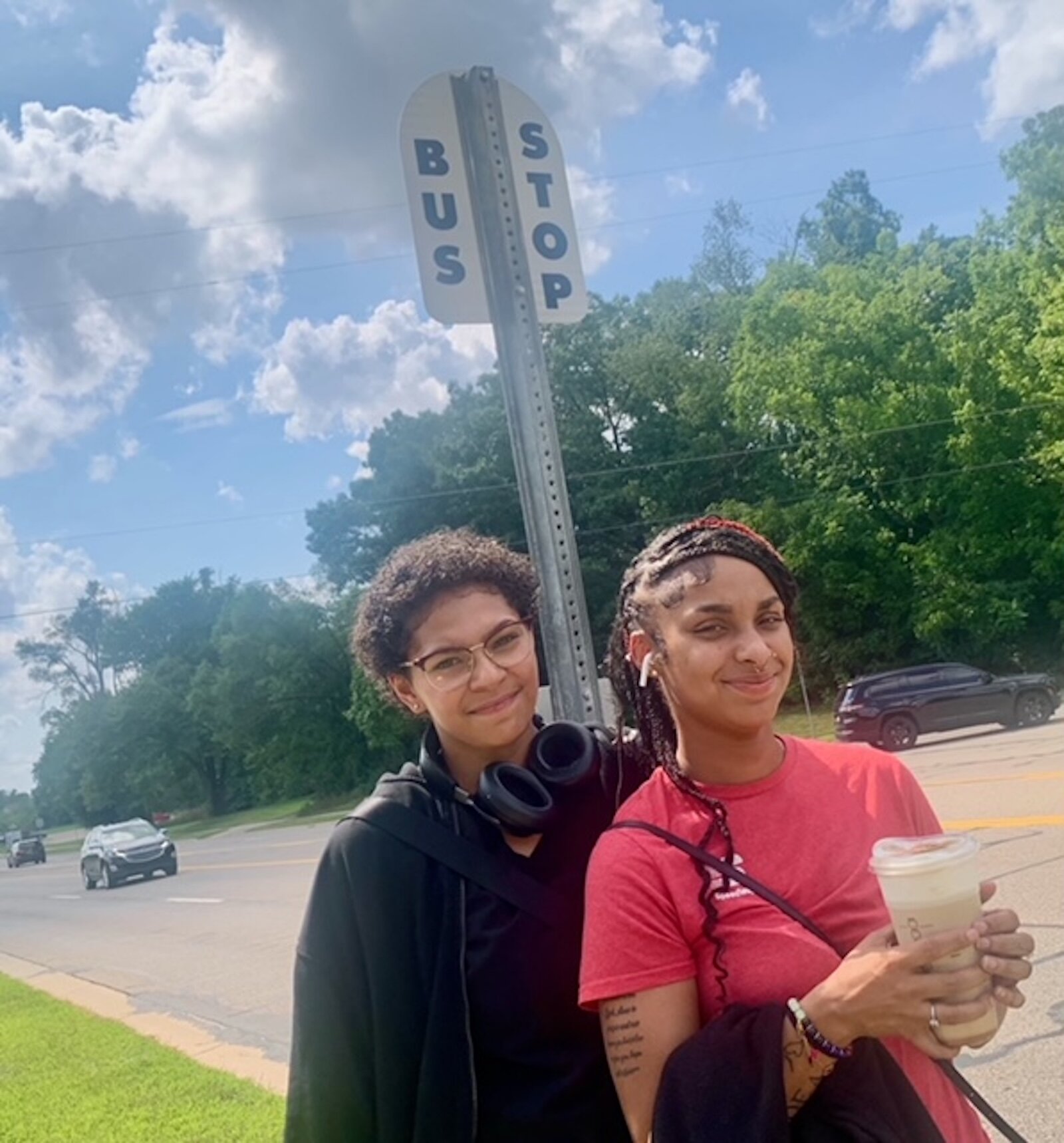
Areanna Snow, left, and Ambria Snow used Metro Transit to go in different directions for work. They found themselves in the same place, however, after taking return bus trips on Monday, Aug. 11, 2025.
She says she doesn’t have far to travel, but takes less than one-third of the time it would if she had to walk. For the three years she’s been a regular rider, Hunter says Metro Transit is dependable and on time, even though there are weather-related traffic delays during the winter. Asked what people should know about the system, she says, buses can get messy by the end of a busy day, and they can be noisy when there are a lot of riders, “but beside that, I think the transportation is good.”
Her girlfriend echoes that opinion.
Areanna Snow, 19, of Gull Road, has used the bus to get to work for the past two years. “But I also grew up taking the bus with my mom,” she says.
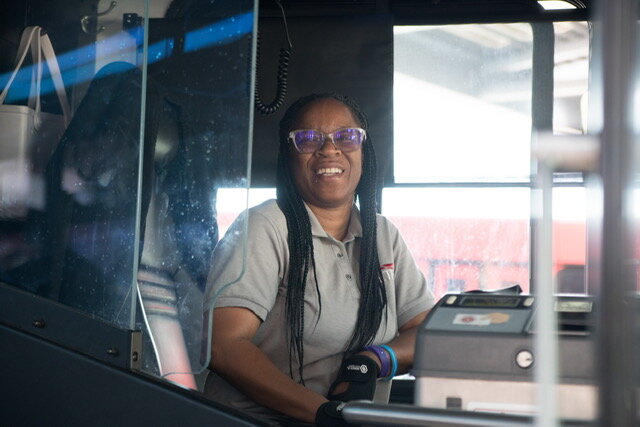
Metro Transit Coach Operator Renee Whitfield prepares to leave the Kalamazoo Transportation Center on Thursday, Aug. 7, 2025.
They used it to go to parks and other places. Now she uses it for a 15-minute ride to work.
She says she is mindful of her surroundings and others when she’s on the bus. But she says the drivers like to keep their buses clean and try to make sure people are respectful.
“I feel like a lot of the bus drivers are good to the community and try to keep the people safe,” Snow says.
Teaming up with employers
McBride says he is proud of the partnerships that Metro Transit has established with companies and organizations in the community. They are tied to helping organizations stabilize transportation for their employees and new recruits. It has worked with Bronson Healthcare since 2017.
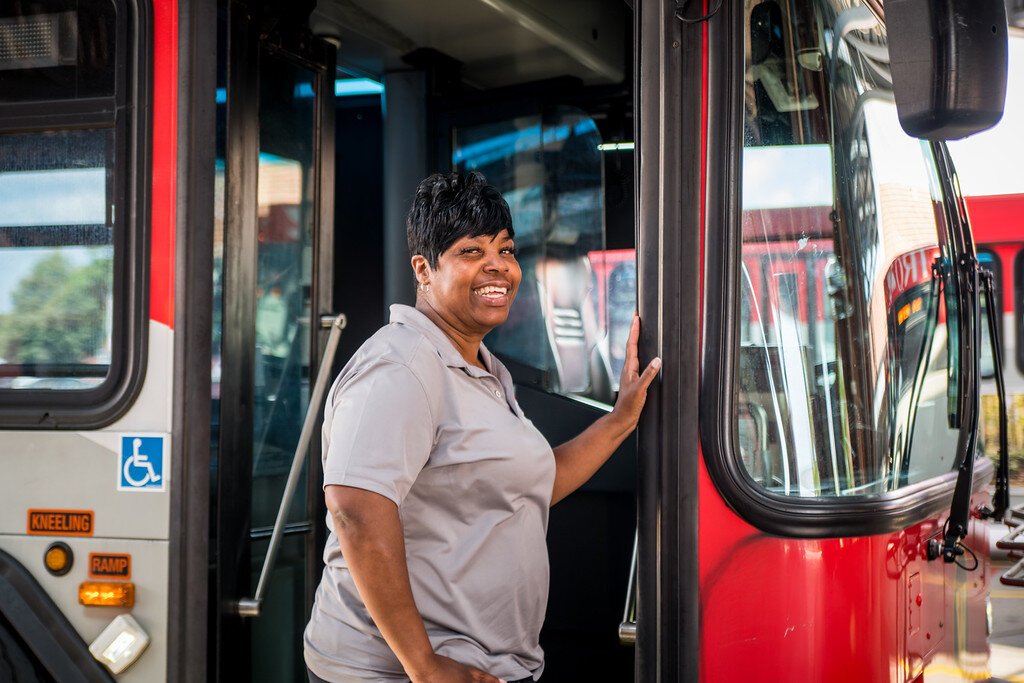
Metro Transit Coach Operator Robin Jones prepares to leave the Kalamazoo Transportation Center on Thursday, Aug. 7, 2025.
“One of the issues they were having was employee recruitment and retention,” McBride says. “What’s one of the main barriers to strong retention? Mobility — people who don’t have cars to get to work on time.”
Metro was able to create a pass program in which the hospital provides transit passes to workers who need them. Metro also partners with Kalamazoo Valley Community College to provide transit passes to students who might otherwise miss classes and drop out of school when their financial aid wanes, leaving them without enough money to get back and forth to KVCC’s campuses.
Youth Mobility success
Metro also has a Youth Mobility Program, funded by the Kalamazoo Foundation for Excellence. It has worked with Kalamazoo Public Schools for the past five years to provide about 500 transit passes per year to help students in need get to after-school programs, after-school jobs, sports practice, and other activities.
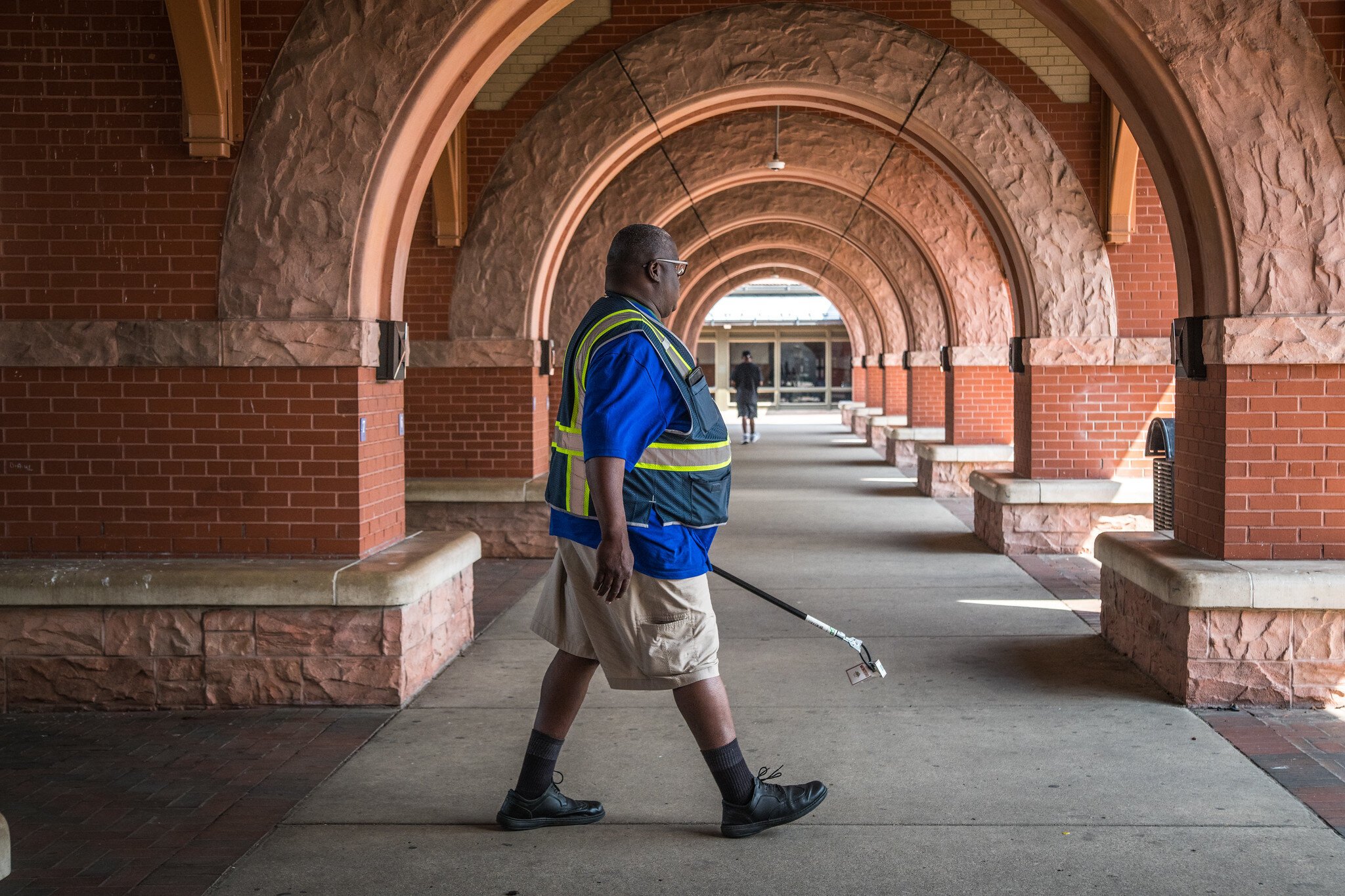
A scene at Kalamazoo Transit Center, 459 N. Burdick.
Asked about the biggest complaint she hears about Metro Transit, Urban says, “They want more service, longer hours, more routes, and more places to go for the buses, especially.”
Green says he was worried about buses being on time when he started taking them three years ago. But says there are now two buses serving his route along South Burdick Street, and they are usually on time.
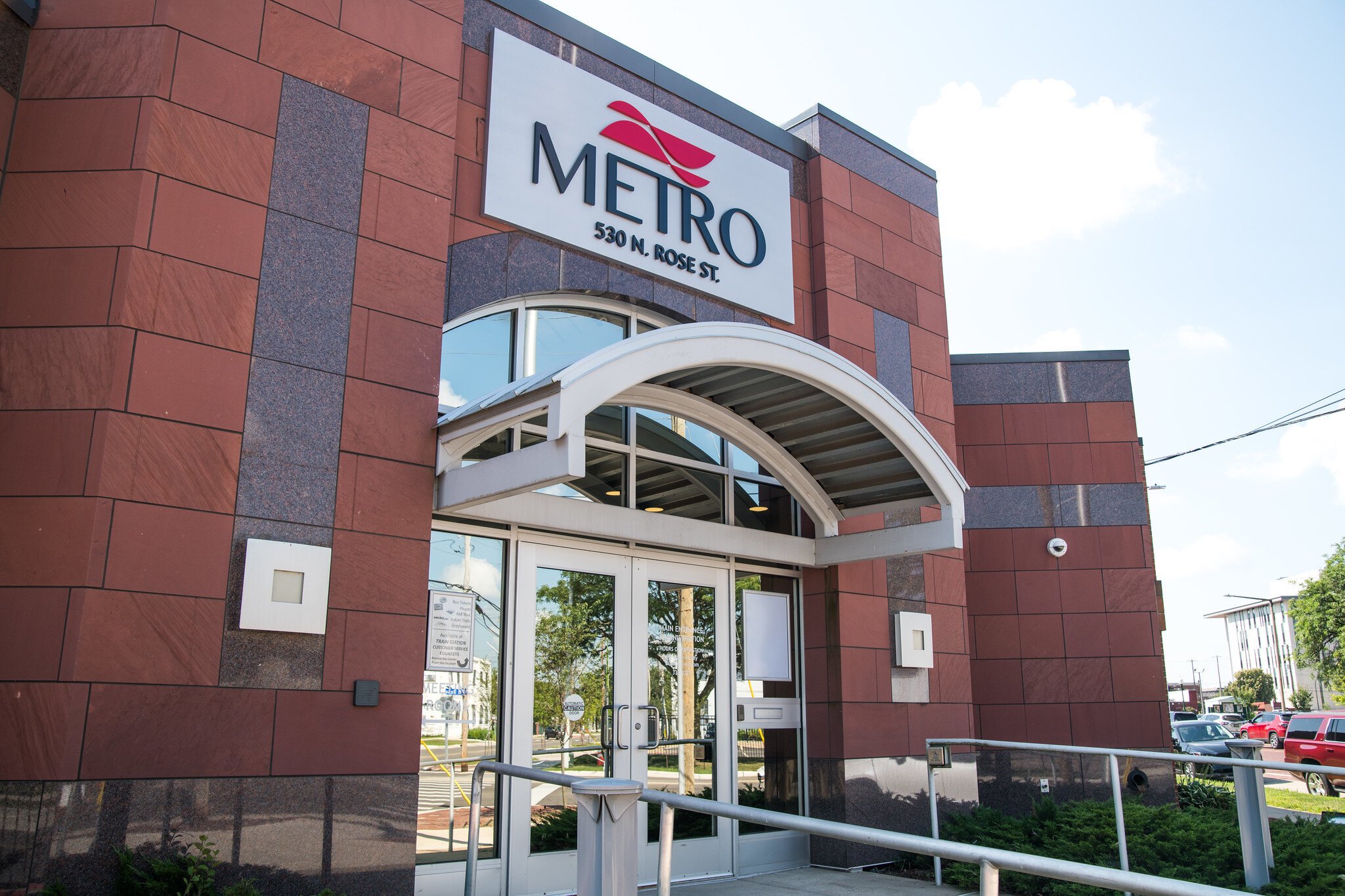
The Kalamazoo Metro Transit administration offices at 430 N. Rose St.
He says he expects to buy a car at some point, but with gas prices rising, he’s not in a hurry. As a senior citizen, it costs him 75 cents for a one-way bus ride, versus the standard $1.50 fare.
Who uses public transportation now?
“People who don’t drive for whatever reason,” Urban says. “People who don’t have cars. Who don’t have other modes of transportation. But we’re also here for people who choose whether they want to. They might have a car like I have a car. But sometimes I like to ride the bus because I don’t want to deal with the construction or whatever is going on out there.”
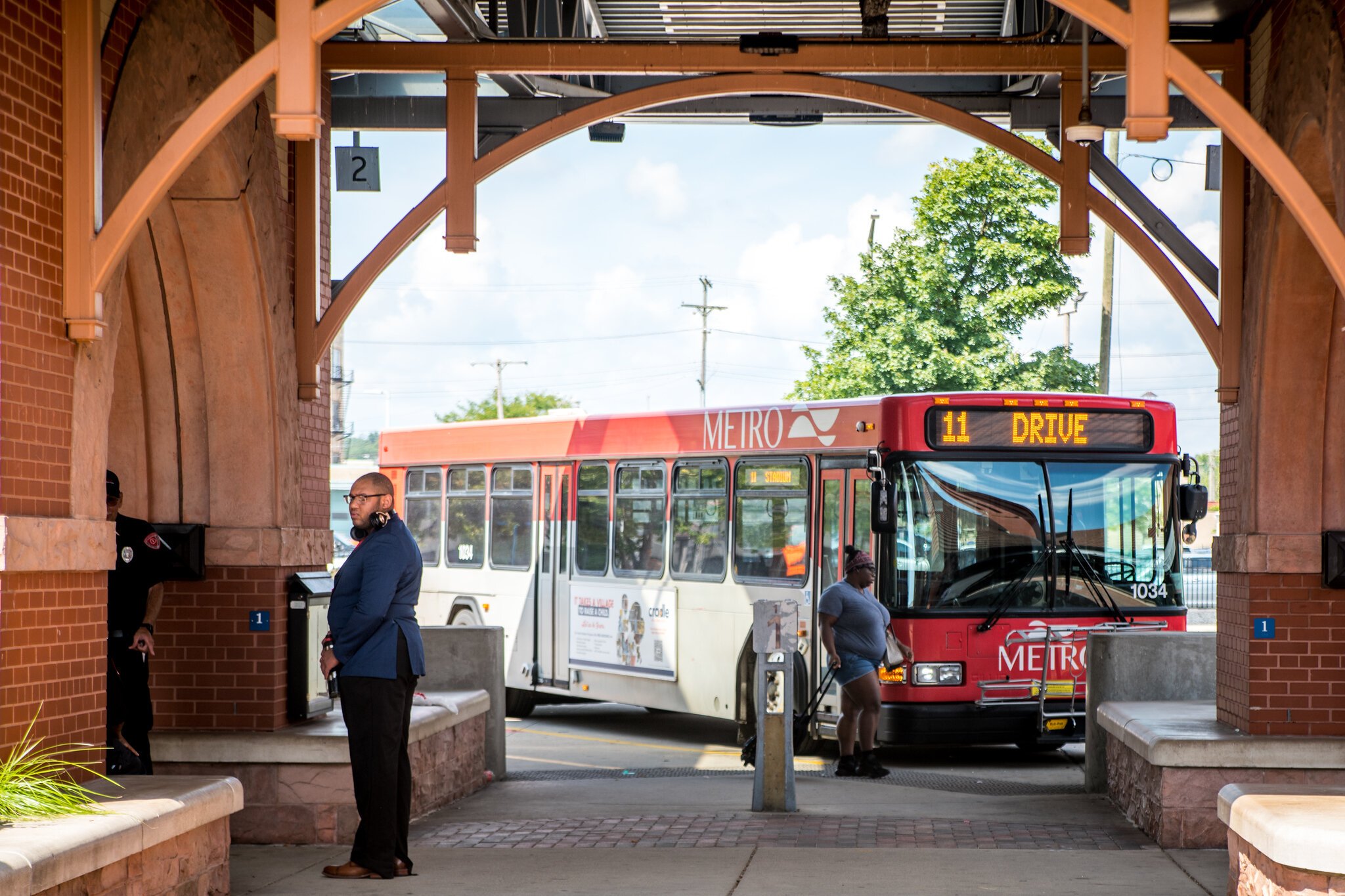
All the buses on Kalamazoo Metro Transit’s 21 routes return frequently each day to the Kalamazoo Transit Center.
She says there are also hybrid travelers — people who ride their bikes, put them on the bus, then finish their commute using their bikes.
What might slow things down?
McBride says the community will have to bear with possibly slower service from Metro Transit as some downtown streets are converted for two-way traffic next year.
Why should people be encouraged?
“A community the size of Kalamazoo — a small- to midsize — urban community has an excellent, robust public transit system, and we have a group of employees here that care about being community servants and taking care of people’s needs to get them where they need to go.”
Editor’s Note: This series, In Transit, focuses on the impact of public transportation in Kalamazoo County. It is made possible by support from Kalamazoo Metro Transit.

